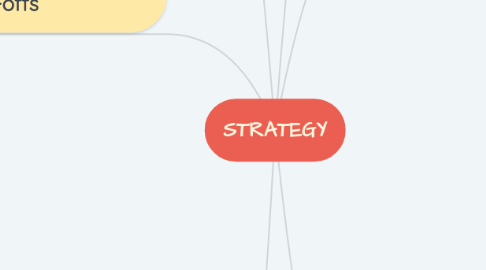
1. Strategy rests on unique activities
1.1. Being different.
1.2. Choose different set of activities → create unique mix of value.
1.3. Perform different activities than rivals.
1.4. Create unique, valuable position.
1.5. The origins of strategic positions
1.5.1. Variety-based positioning
1.5.1.1. Create a subset of products, services
1.5.1.2. The choice of products, services varieties is the base, not customer segments.
1.5.2. needs-based positioning
1.5.2.1. Serves the needs of a particular customers group.
1.5.2.2. Customers segment is the base.
1.5.3. Access-based positioning
1.5.3.1. Divide accessible customers in different ways.
1.5.3.2. Requires a different set of activities to reach customers in the best way.
2. A sustainable strategic position requires Trade-offs
2.1. Choosing a unique position could not ensure the advantage sustainability.
2.2. Competitors copy the worthy position.
2.2.1. Reposition itself to match the superior performer.
2.2.2. Trying to fit the benefits of the successful position and maintain its existing position at the same time (Straddling or repositioning).
2.3. Trade-offs with other positions to remain the sustainability.
2.4. Why trade-offs arise?
2.4.1. Reputation or image inconsistency
2.4.2. Activities are over or under designed.
2.4.3. Limits on internal coordination and control.
2.5. Create the need for choice.
2.5.1. Against the repositioners and straddlers.
2.5.2. The essence of strategy is choosing what not to do
3. Fit drives both competitive advantages and sustainability
3.1. Types of fit
3.1.1. First-order fit
3.1.1.1. There is a consistency between each function and overall strategy.
3.1.1.2. The consistency guarantees that the competitive advantage could be accumulated and not cancel themselves out.
3.1.1.3. Easier to communicate with the stakeholders and shareholders about the strategy.
3.1.1.4. Improve the implementation through single-mindedness in the corporation.
3.1.2. Second-order fit
3.1.2.1. Only happens when the activities are reinforced.
3.1.3. Third-order fit
3.1.3.1. An optimization of effort.
3.1.3.2. Eliminating the redundancy and minimizing wasted effort by exchanging and coordinating the information.
3.2. Fit and sustainability
3.2.1. Strategic fit is the fundamental to competitive advantage and its sustainability.
3.2.2. Strategic fit creates pressure to improve the operational effectiveness.
3.2.3. Strategic positions should have a horizon of a decade or more.
3.2.4. No Strategic fit = no distinctive strategy =little sustainability
4. What is strategy?
4.1. The creation of a unique and valuable position.
4.1.1. Many customers- few needs
4.1.2. Few customers- broad needs
4.1.3. Many customers- broad needs- narrow market
4.2. Make trade-offs in competing- choose what not to do.
4.3. Creating "fit" among a company's activities.
5. Operational Effectiveness ≠ Strategy
5.1. Operational Effectiveness
5.1.1. Greater efficiency.
5.1.2. Lower average unit costs.
5.1.3. Similar activities > competitors.
5.2. Strategic positioning
5.2.1. Greater value
5.2.2. Charge higher average unit prices
5.2.3. Different activities from competitors
5.2.4. Similar activities in different ways.
6. Rediscovering strategy
6.1. Failure to choose
6.1.1. Managers confuse in making choices.
6.1.2. Create no Trade-offs.
6.1.3. Constantly pursuing operational effectiveness.
6.1.4. Imitating competitors to catch up in the operational effectiveness race.
6.2. The growth trap
6.2.1. Managers broaden their position in the market by: Extending product lines, adding new features, imitating competitors' services, making acquisition.
6.3. Profitable growth
6.3.1. Adding the features or services to the existing activity system to make the competitors could not imitate.
6.3.2. Blur the uniqueness, reduces fit, undermines competitive advantage.
6.4. The role of leadership
6.4.1. Having strong leader is crucial.
6.4.2. Define and communicate the core unique position.
6.4.3. Create Trade-offs.
6.4.4. Form the fit among the activities.
6.4.5. Figure out which is the changes in customers demand and industry
6.4.6. Determine the target customers group, varieties, needs.
6.4.7. Deciding not to serve other customers or needs and not to offer certain services or features.

